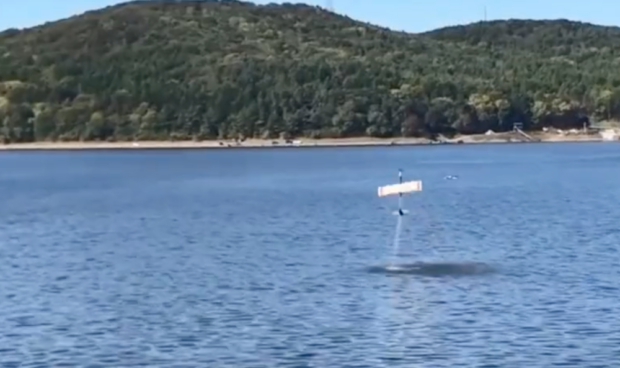Chinese researchers successfully tested two submersible cross-media vehicles or ‘flying submarines’ that can travel underwater and cross over into the air and fly.
According to the news from the WeChat public account “Harbin Engineering University” on November 4, two “small planes” dived into the water one after another on the sparkling water and arrived at the designated position in tens of seconds. Turn around and fly lightly out of the water.
These are two submersible trans-media vehicles named “Longbow 1” and “Longbow 2”, which were built by the State Key Laboratory of Underwater Robot Technology of Harbin Engineering University for more than a year. The two aircraft adopt fixed-wing and folding-wing structures respectively, and both can quickly cross the water-air medium, fly stably in the air, and sail submerged under water. The whole process is fully autonomous without manual control.
https://youtu.be/V0tUozpnAMk
With a load of 1 kg and a diving depth of 100 meters, the submersible trans-media vehicle successfully flew
In the golden autumn of October, at the Longfengshan Reservoir in Wuchang City, with the disappearance of the communication signal, “Longbow 1” began its autonomous cross-domain voyage. More than 40 seconds later, the propeller pierced the water surface, and the familiar sound of the motor came to the ears. “Longbow 1” came out of the water.
With the discharge of the water in the body, “Longbow 1” independently adjusted its flight attitude and took off quickly. Leaving the water, it completed the water-air medium crossing process with a good and stable attitude out of the water, and achieved stable flight in the air as expected.
 ▲ “Longbow No. 1” cross-domain attitude
▲ “Longbow No. 1” cross-domain attitude 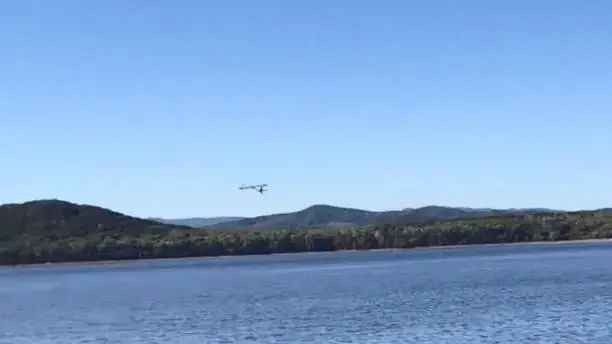
During the entire test, the 7-second cross-medium transition of the “Longbow 1” from the water to the stable flight made the researchers most nervous. “Air and water are two completely different media. The density of water is nearly 800 times higher than that of air. When a submersible trans-media vehicle operates in two completely different environmental media, it will be affected by unknown winds, waves, and currents. Combined interference, the environmental external force and the corresponding dynamic response are significantly different.” Wang Baoxu, a master student.
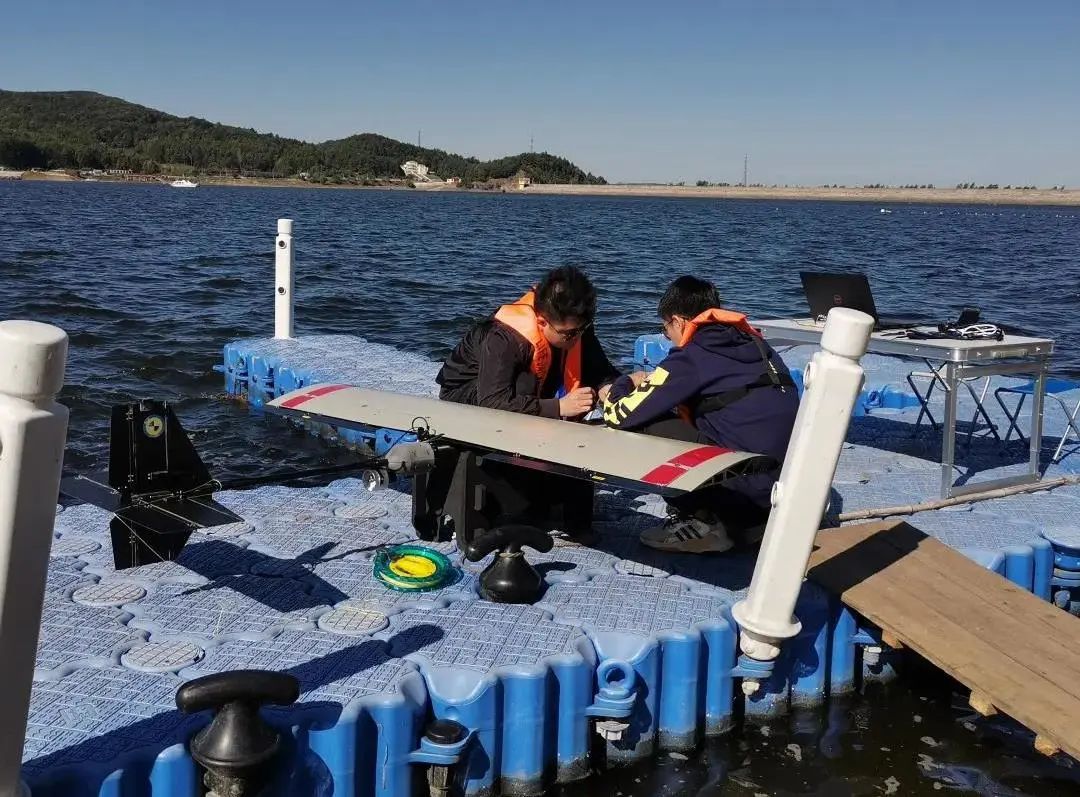
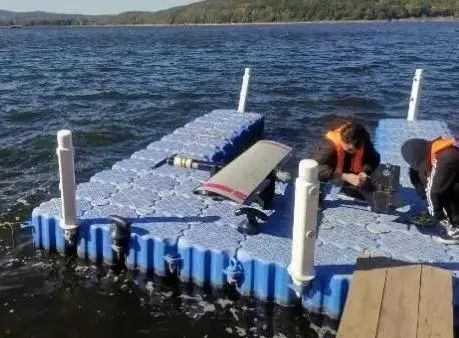
In 2021, with the support of the National Natural Science Foundation of China, the team will carry out research work on the technology of submarine cross-domain unmanned aerial vehicles. At the beginning of the design, the team conducted several discussions on the flight configuration scheme of the submersible trans-medium vehicle, and discussed the mission capabilities, application prospects, and technical feasibility of the multi-rotor, tilt-rotor, and fixed-wing configuration schemes. A comprehensive comparative analysis was carried out, and the fixed-wing flight configuration scheme was finally determined.
Compared with other structures, the fixed wing takes less time to cross the medium, but it is more difficult to develop. Unlike multi-rotors that can take off on water, fixed-wing aircraft can directly cross the water-air interface. There is no suitable mathematical model for this cross-domain approach.
Integrating the requirements of various performance parameters in the water and in the air, the team conducted numerous simulation experiments, completed the overall scheme design of the “Longbow 1” and “Longbow 2” prototypes, and evaluated the aircraft’s air flight, water performance and performance based on CFD technology. The motion performance of the process of sailing under water and crossing the water-air medium has verified the feasibility of the two-type prototype scheme.

The wings of the two aircrafts are unfolded to look like longbows. According to the team, when naming the aircraft, they quoted the implication of “holding the eagle bow like a full moon, looking northwest, and shooting Sirius.” After the wings are deployed, the dimensions are 2.3m long x 2m wingspan and 1.9m x 2.5m wingspan respectively. Not only can it switch freely in the air, on the surface of the water, and underwater, but it can also carry a weight of 1 kg and dive to a depth of 100 meters. High-definition cameras and digital radio stations complete the interface observation between the atmospheric boundary layer and the ocean boundary layer.
Let the plane dive, let the submersible fly
It is not common to see aircraft that can go to the sky and enter the sea. Experts in the industry believe that this aircraft has a wide range of uses and has broad application prospects in ocean exploration and development.
Letting “aircraft dive” is the housekeeping skill of the Kazakh engineering research team. In order to make the aircraft withstand pressure under 100 meters of water, the team designed a pressure-resistant cabin for the aircraft, using a small propeller as underwater power The source realizes the stable navigation of the aircraft under water. But making the “submersible fly” really brought a lot of challenges to the team.

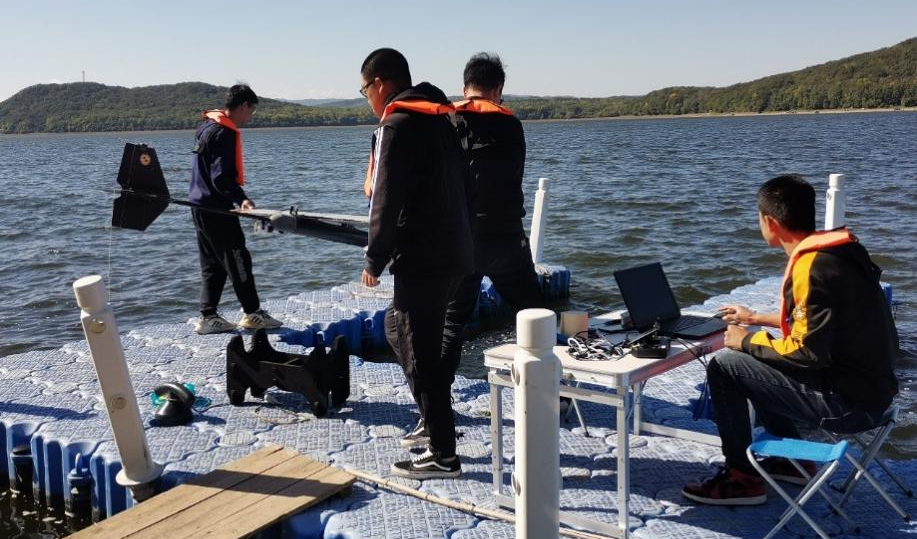
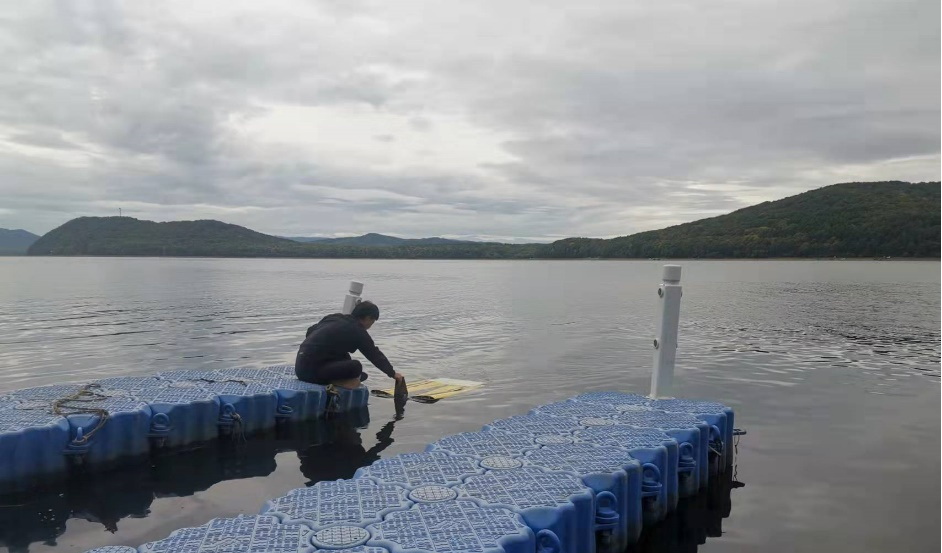 ▲ “Longbow No. 1” was commissioned at the floating dock (top) “Longbow No. 2” was launched (bottom)
▲ “Longbow No. 1” was commissioned at the floating dock (top) “Longbow No. 2” was launched (bottom)According to Sun Xiangren, the technical director and a doctoral student, in order to resist pressure, the deeper the aircraft dives, the heavier the material, but the aircraft with an overweight fuselage cannot take off lightly. Therefore, the team used a series of methods to reduce the weight of the aircraft . “We not only use new carbon fiber composite materials to replace ordinary metals, but also try our best to reduce the weight of the aircraft in terms of structural design. We are also concerned about the wires weighing 1 gram. Under the design requirements, we strive to minimize the total mass of the aircraft. Keep it to a minimum.”
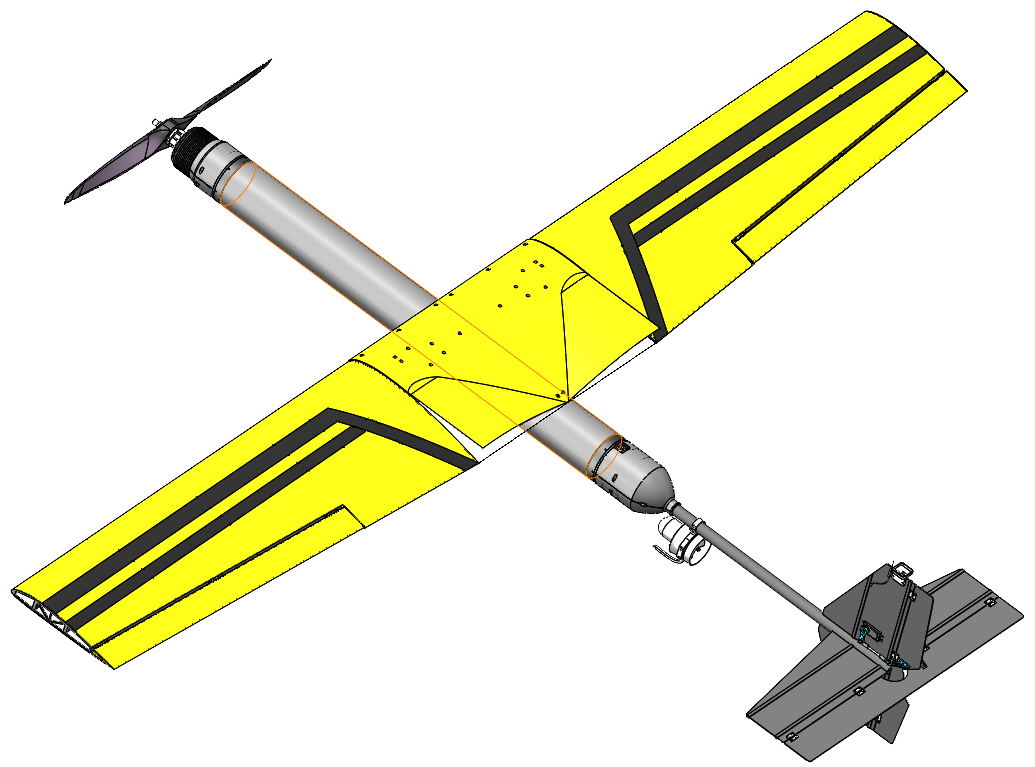 ▲The overall design of “Longbow 2”
▲The overall design of “Longbow 2”In order to improve the cross-medium capability, the team specially designed the folding wings for the “Longbow 2”, which also means that the stable attitude of the aircraft is more difficult to control. In order to make the “Longbow 2” fly stably, its folding structure has been changed as many as 9 versions. In the test, the “Longbow 2” came out of the water as a whole, spread its wings, and took off successfully. The whole process took less than 6 seconds.
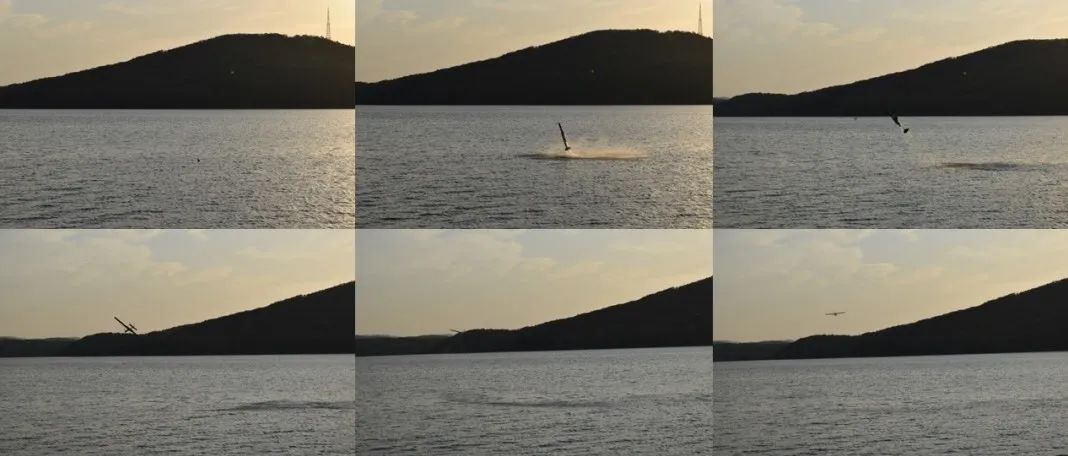 ▲Picture of cross-domain posture of “Longbow 2”
▲Picture of cross-domain posture of “Longbow 2”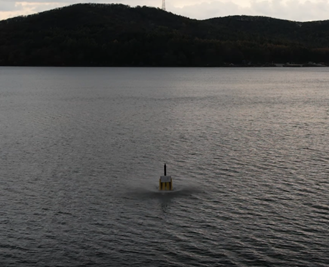
Both fixed-wing and folding-wing prototypes have successfully achieved cross-domain navigation, which means that new progress has been made in the technology of cross-media aircraft that integrates air flight, surface cruising, and underwater cruising capabilities. Behind this is the team members The result of perseverance, excellence and joint efforts. From key technical research to prototype system integration, from numerical simulation to prototype pool integration test, the team members worked steadily every step of the way without any carelessness. During the test, the autumn wind on the lake was like a knife, and the team members braved the autumn cold and wrapped themselves in military coats to test the movement posture of the aircraft over and over again on the floating pier.
“We set out every day with the mist in the morning, and headed home under the light of the long embankment at night. Maybe others don’t understand it, but this is the romance of Chuanhai people.”
Doctoral student Han Zhaoliang said.
Source: Sina

